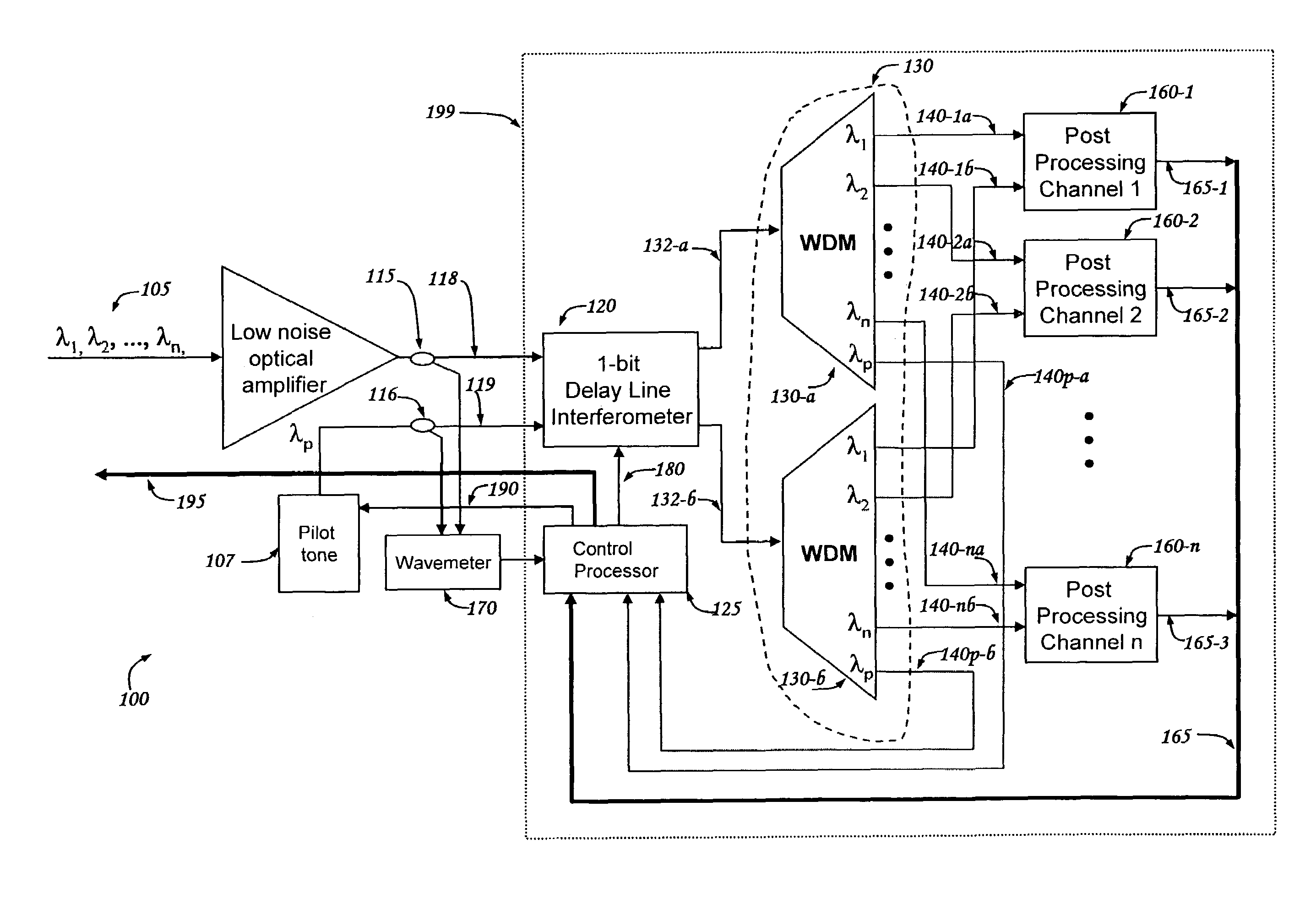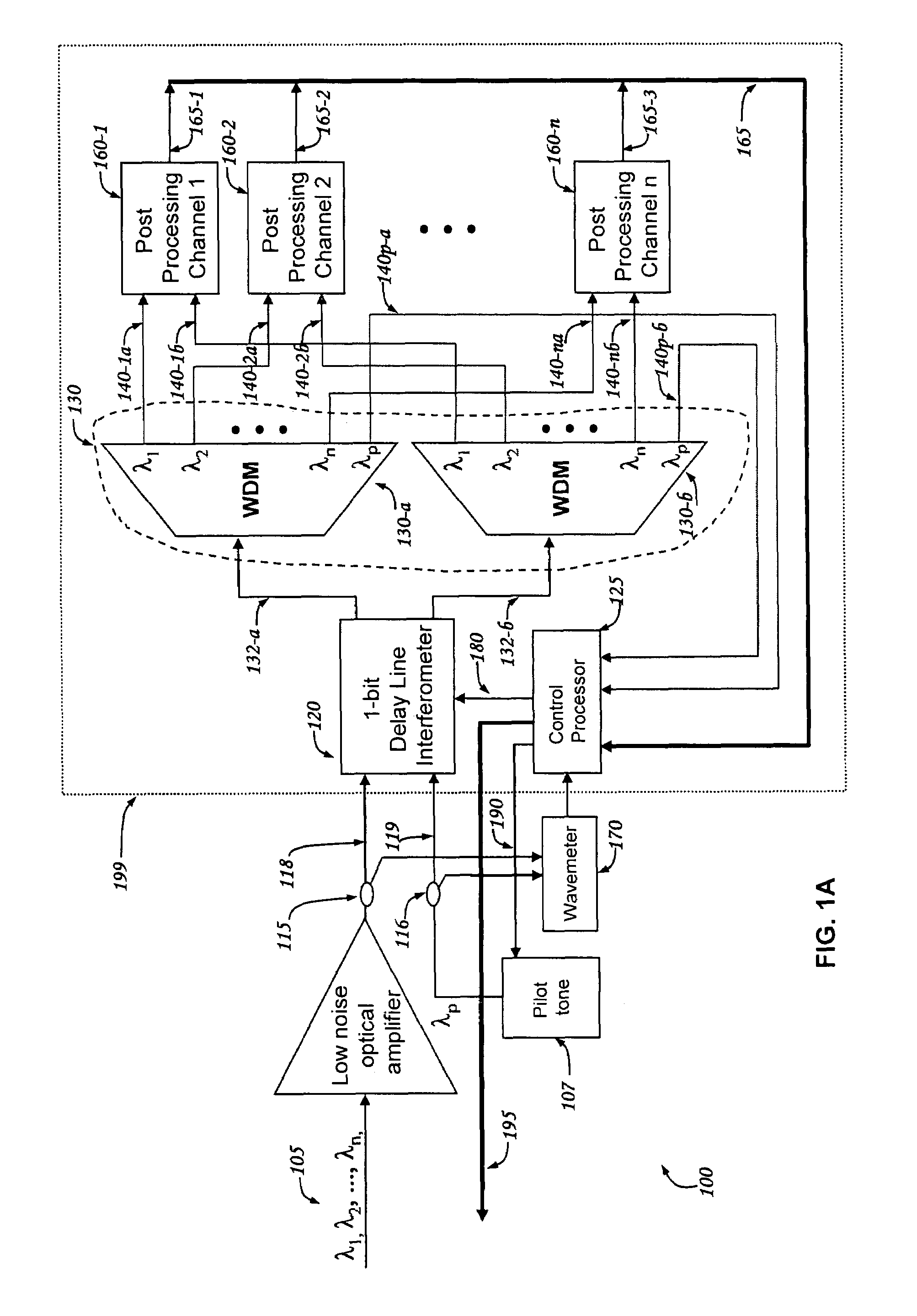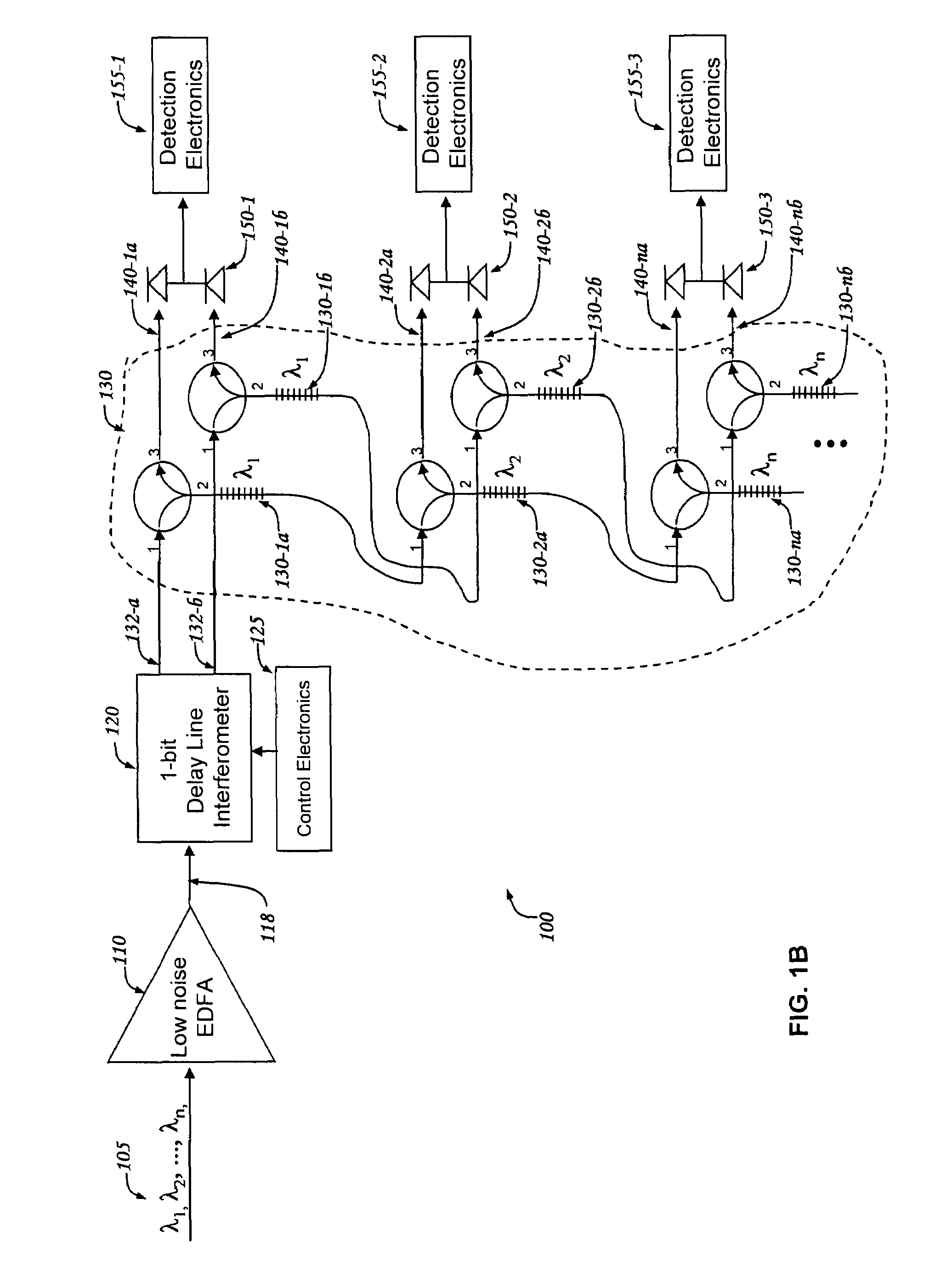Multi-channel differentially encoded phase shift keyed receivers
a receiver and differential encoder technology, applied in multiplex communication, wavelength-division multiplex systems, instruments, etc., can solve the problems of increasing size, weight, power, cost, etc., and achieves the effect of reducing bandwidth, less sensitive and more complex, and improving spectral efficiency
- Summary
- Abstract
- Description
- Claims
- Application Information
AI Technical Summary
Benefits of technology
Problems solved by technology
Method used
Image
Examples
Embodiment Construction
[0027]A description of preferred embodiments of the invention follows.
[0028]FIG. 1A and FIG. 1B are schematic diagrams of example embodiments of an optical, multi-channel, binary DPSK receiver 100 according to the principles of the present invention. The receiver 100 receives optical signal(s) 105 from optical transmitter(s) 90. The optical signal(s) 105 may have many DPSK channels defined by distinct wavelengths, λ1, λ2, . . . , λn. In one embodiment, the optical signal(s) 105 are received by an optical amplifier 110, such as a low noise Erbium Doped Fiber Amplifier (EDFA) 110, that may be separate from the receiver 100 or integrated into the receiver 100. The EDFA 110 outputs amplified optical signal(s) 105 to a first optical splitter 115, which directs a portion of the amplified optical signal(s) 105 to a binary DPSK demodulator 199, including an interferometer 120, such as a 1-bit delay line interferometer 120, which receives the amplified signals via a primary input line 118. T...
PUM
| Property | Measurement | Unit |
|---|---|---|
| wavelength ranges | aaaaa | aaaaa |
| optical center frequencies | aaaaa | aaaaa |
| optical center frequencies | aaaaa | aaaaa |
Abstract
Description
Claims
Application Information
 Login to View More
Login to View More - R&D
- Intellectual Property
- Life Sciences
- Materials
- Tech Scout
- Unparalleled Data Quality
- Higher Quality Content
- 60% Fewer Hallucinations
Browse by: Latest US Patents, China's latest patents, Technical Efficacy Thesaurus, Application Domain, Technology Topic, Popular Technical Reports.
© 2025 PatSnap. All rights reserved.Legal|Privacy policy|Modern Slavery Act Transparency Statement|Sitemap|About US| Contact US: help@patsnap.com



